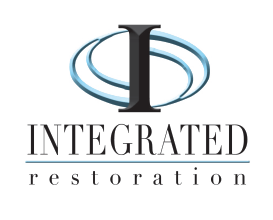Hidden Mold Risks as Ice and Snow Thaw – What Homeowners Need to Know
As the recent deep freeze starts to thaw, homeowners in Cleveland are facing a new problem: hidden moisture and mold growth. Snow and ice that built up over the winter are now melting, leading to water intrusion, leaks, and the perfect environment for mold. If your home has experienced condensation, leaks, or flooding, now is the time to act.
In this article, we’ll explore why thawing conditions can lead to mold, the warning signs, and what you can do to protect your home.
Why Thawing Ice and Snow Create Mold Problems
Cleveland’s winters bring fluctuating temperatures, causing ice dams, frozen pipes, and heavy snow buildup. When temperatures rise, all of that frozen moisture starts melting, and if it seeps into your home, mold growth can begin within 24-48 hours.
Some key mold risks associated with thawing conditions:
Ice Dams: When snow on your roof melts and refreezes, it can cause water to back up under your shingles, leaking into your attic.
Basement Flooding: Melting snow seeps into foundation cracks, increasing humidity and leading to mold growth.
Condensation Issues: Rapid temperature swings cause warm air to hit cold surfaces, leading to excess moisture in walls and crawl spaces.
Frozen Pipes Bursting: If a pipe freezes and bursts, you may have hidden water damage behind walls, a breeding ground for mold.
Warning Signs That Mold May Be Growing in Your Home
Even if you haven’t seen visible water damage, mold can develop in hidden areas. Be on the lookout for:
Musty Odors: A persistent damp, earthy smell is a strong indicator of mold.
Discoloration on Walls or Ceilings: Brown, yellow, or black stains can signal moisture problems.
Peeling or Bubbling Paint: Excess moisture behind walls can cause paint and wallpaper to deteriorate.
Increased Allergy Symptoms: If you or your family experience more sneezing, coughing, or respiratory issues, mold could be the culprit.
Increased Humidity: Windows are showing excess condensation or drywall becomes brittle. Mold tends to thrive in environments greater than 60% relative humidity.
If you notice any of these signs, a mold inspection is crucial to identify hidden growth before it becomes a major problem.
What Homeowners Can Do to Prevent Mold After the Thaw
Since mold thrives in damp conditions, preventing moisture buildup is the best defense. Here’s what you can do:
1 - Inspect Your Home for Water Damage
Check your roof and attic for leaks caused by ice dams.
Examine basements and crawl spaces for moisture or standing water.
Look around windows, doors, and pipes for condensation or water stains.
2 - Dry Out Damp Areas Immediately
Use dehumidifiers and fans in basements, attics, and other humid areas.
If carpets or furniture are wet, dry them within 24-48 hours to prevent mold growth.
Open windows and increase airflow when temperatures allow.
3 - Address Leaks and Insulation Issues
Seal foundation cracks and improve drainage around your home.
Add attic insulation to prevent future ice dams.
Check your gutters to ensure proper drainage away from your home.
4 - Schedule a Professional Mold Inspection
Even if your home looks dry, mold can grow in hidden areas such as behind walls, under flooring, and inside ductwork. A professional mold inspection can detect hidden moisture issues and prevent costly damage.
Don’t Wait – Get a Mold Inspection Today
With Cleveland’s recent thawing conditions, now is the perfect time to inspect your home for potential mold growth. Catching mold early can save you thousands in repairs and protect your family’s health.
Need a professional mold inspection? Our experts at Integrated Restoration offer thorough mold testing, remediation, and prevention solutions. Contact us today for a free consultation!
Call us 24/7 at (216) 361-3473 or fill out our contact form to schedule an inspection.
FAQs
-
When snow and ice melt, water can seep into your home through roof leaks, foundation cracks, and condensation buildup, creating the perfect conditions for mold growth.
-
Look for musty odors, discoloration on walls or ceilings, peeling paint, or increased allergy symptoms. If you suspect mold, a professional inspection can help detect hidden growth.
-
Basements, attics, crawl spaces, and areas near windows, doors, and plumbing are most vulnerable to moisture buildup and mold growth.
-
Ensure proper drainage, use dehumidifiers, dry out damp areas quickly, and schedule a mold inspection if you suspect hidden moisture problems.
-
Yes! Mold can grow in hidden areas like behind walls and under flooring. A professional inspection can identify moisture issues before they become a costly problem.

